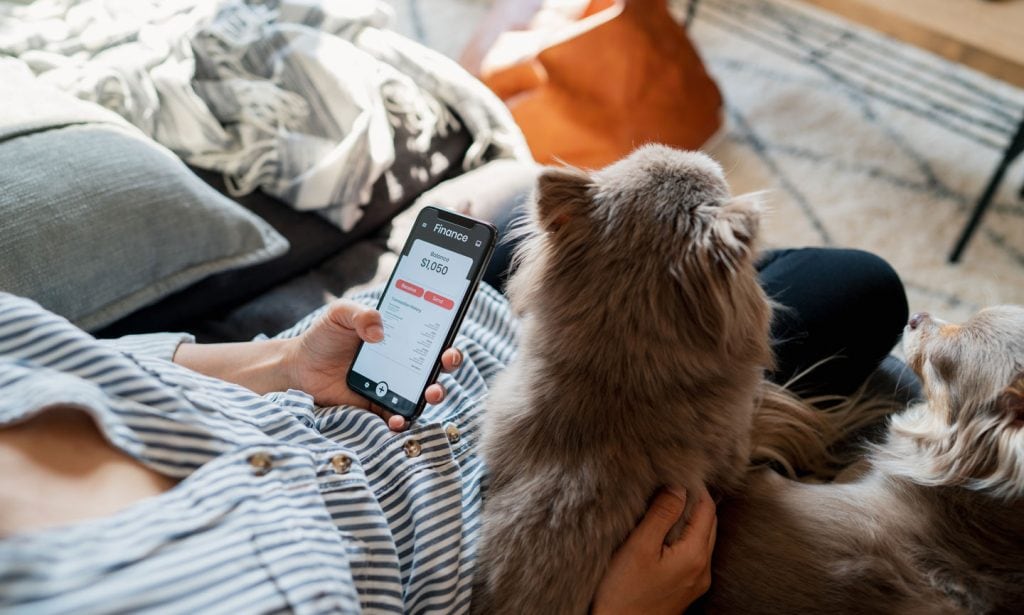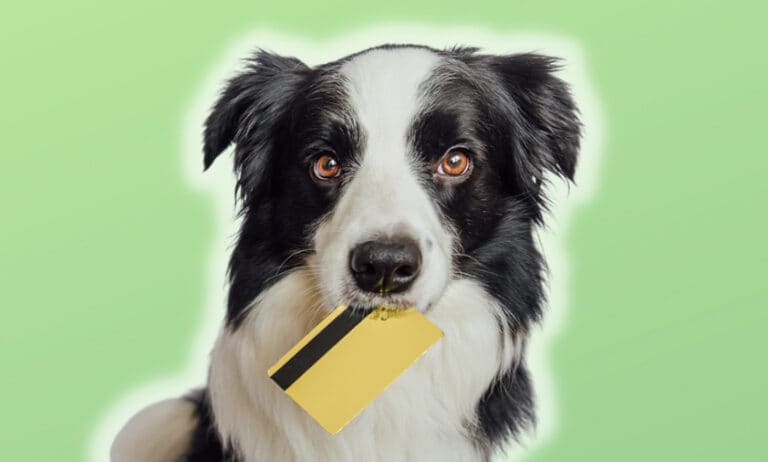Money is tiiight right now. (Thanks, inflation!) But we know you still want the best for your pets. That’s why we turned to the experts to help you create a basic budget for your pets’ everyday expenses, and some additional or even unexpected costs, like having to go out of town last minute and needing a pet sitter… or snapping up that new dog coat in Pantone’s color of the year that you just couldn’t resist.
The Basics of Budgeting
While you might cringe at the dreaded “B” word, a budget is not as restrictive as you think. Here’s what to do.
Start by adding up your income. (This is the fun part.)
List all of the sources of income you have coming in every month. That can include paychecks, money you earn from a side gig, Social Security benefits, and any other cash that comes your way on a regular basis.
Then add up your expenses. (This is the not so fun part, but be honest and complete.)
Next, list every single thing you spend money on in a given month. Expenses within a budget can be categorized in one of two ways:
Fixed: These are your expenses that come regularly and for the same amount. It includes things like:
- Rent/mortgage
- Cell phone bill
- Tuition fees
- Insurance premiums
- Loan payments
- Contributions to 401K
- Liquid savings like stocks and bonds
Variable: Unlike fixed expenses, variable expenses are less predictable and the amount fluctuates. For instance, your electricity bill is probably different each month depending on your usage. Though you can’t predict exactly what your variable expenses will be, you can set a target by averaging your spending over the last three to six months. In includes things like:
- Utility bills
- Groceries
- Dining out
- Entertainment
- Pet food and supplies
- Vet visits
You can do this by hand in a notebook or in an Excel spreadsheet. Once you get the hang of it, you can use free tools such as Mint to automatically pull in your monthly transactions and categorize them for you.
Calculate your bottom line.
Finally, subtract your expenses from your income. Are the numbers adding up, or do you need to adjust your spending and find ways to cut back?
Pro tip! Need help staying on track? Try the 50/30/20 budget:
50% of your net income goes toward living expenses (i.e. needs).
30% goes toward discretionary spending (i.e. your wants).
20% goes toward savings (or paying down debt).
What Pet Expenses Should You Budget For?
Pet parents are spending more on their fur babies than ever, with the pet industry reaching record-setting sales numbers in the last two year. On average, dog parents spend roughly $1,500 in annual costs, ranging from healthcare to food to boarding, and cat parents spend a little over $900 in annual costs, according to a 2021-2022 survey conducted by the American Pet Products Association. (That’s not an exhaustive list of pet expenses, either.) The top expense category is veterinary services, with the average dog parent spending $700 on vet bills for the year, and the average cat parent spending about $375.
“There is no one-size-fits-all answer to how much of your income should go toward pet costs, as it will depend on your financial situation, priorities, and your pet's specific needs,” says Andrew Latham, a certified financial planner and the managing editor of SuperMoney.com. “However, as a general rule, it is a good idea to set aside a specific budget for your pet's expenses, including food, supplies, medical care and any other necessary costs.”
Latham adds that it’s important to have this budget created before an emergency occurs. “When you are in an emergency, your emotions and stress levels can be heightened, making it more difficult to think clearly and make good decisions.”
In general, you should expect these costs of pet ownership in your budget:
- Medical expenses: Flea prevention, vaccines, dental care, and other medical costs
- Food: Pet food, treats, supplements
- Grooming: Shampoo, cuts, nail trimming, ear cleaning
- Pet sitting: Boarding, overnight stays at your home, daycare, drop-ins for walks/feeding
- Training: Obedience, behavioral issues
- Accessories: Collars, leashes, ID tags, bowls, clothes, toys, bedding
- Miscellaneous pet supplies: Litter box, waste bags, aquarium pumps, heat lamps, etc.
Even though there’s no one magic number for how much you should be spending, it is important to keep these costs in check. Forrest McCall, a personal finance expert and owner of the finance site Don’t Work Another Day, recommends keeping your costs under 5% to 6% of your take-home pay.
“This should give you enough to provide the basics,” he says. “Depending on your income, this number might be higher or lower—it’s all about what you can afford compared to your other necessary expenses and how you prioritize them.”
So say you earn $50,000 per year after taxes. That means you should plan to spend a max of $2,500 to $3,000 a year on pet costs.
Start a “Sinking Fund”
It can be challenging to balance pet expenses with all of your other bills, especially when you don’t always spend the same amount each month.
To help with this, McCall says it can help to have a “sinking fund” for pet expenses. This is a special savings account where you set aside money each month for planned, irregular expenses.
For example, if you know you want to go on vacation this summer but don’t have a friend or family member to watch your pet, you can put money in the sinking fund to pay for a sitter. Make this a line item in your pet budget so you always have funds to pull from when you need to buy a new leash or pay a pet sitter.
Budget for Emergencies
It’s also a good idea to maintain an emergency fund. Nothing is worse than being hit with a surprise vet bill when you don’t have any extra cash in the bank. “This money should be saved and set aside, so if there is an emergency vet visit, you’ll have the funds available to keep your pet safe,” McCall says. Aim to have an extra $1,000 for emergencies.
Sample Pet Budget
So what should your pet budget look like? It’ll depend on the type of pet you have, the level of care they require, and more. But here’s an example of a monthly budget you can use for inspiration:
Pet Insurance
$50
Flea and heartworm prevention
$20
Food
$60
Groomer
$40
Sinking fund
$20
Treats
$15
Toys
$10
Dog walker
$30
Misc. expenses
$10
Total
$225
What to Do if You Need Help Covering Pet Costs
Even the best laid plans can go awry. There may be times when your pet gets sick or hurt and the cost of treating them is very high—maybe too high for you to handle, even with pet insurance. In that case, there are some options you can consider.
- Negotiate a payment plan with your vet: Sometimes it’s possible to work out a payment plan, particularly with independent and smaller veterinary offices. It doesn’t hurt to ask.
- See if they accept CareCredit: This is an online credit provider that offers veterinary financing. Once approved, you can use CareCredit credit cards again and again to cover pet care costs.
- Check out Waggle: This non-profit crowdfunding site specializes in raising money to cover veterinary care. Funds are paid directly to approved vet offices.
- Reach out to the ASPCA: This organization provides a variety of services in NYC, LA and North Carolina that help animals and pet owners, including keeping pets in loving homes. If your pet’s annual expenses are too high, the ASPCA may have a helpful program in your area such as pet food banks, community vaccination clinics, low-cost spay/neuter services and temporary housing. You can also contact your local animal shelter for similar services.
Get more advice on how to make the most of 2023:
Share:









